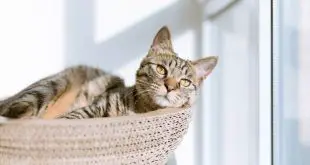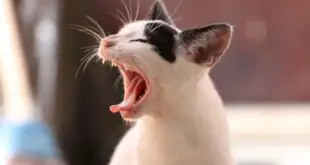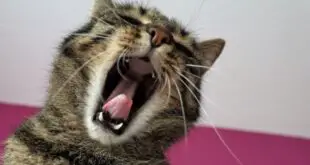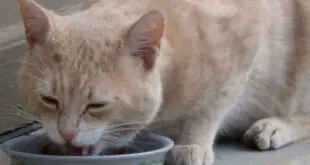This post may contain affiliate links. Please read our disclosure.
One topic that can generate a lot of heated debate among cat parents is what type of litter to use. Cats have a natural instinct to cover their waste. A cat’s litter box is typically the right size and depth for your pet to do this.
Burying feces in this way is also vital in controlling odors, as a cat’s sense of smell is much better than ours so they can easily detect even minor smells, which they will avoid if possible.
These smells are not only dreadful but also attract other cats, dogs, or wildlife to the area as well which can lead to severe health hazards and costly repairs or clean-up.
Article Contents
Considerations for Litter Types
There are a few features shoppers should consider before making that purchase. Do you have multiple cats? Is your home on ground level or a lower level, since boxes need more height for some types of litter?
Do you want clumping or not, lightweight, natural options, fragrance-free options, clay litters, or solid general-purpose litters.
Does the type of cat litter matter? Yes, the type of cat litter you use in the litter box matters because it can affect other aspects of cat parenting which include odors, cat preferences and comfort, and cat health.
Types of Litter for Cats
1. Clay Litter
This type of litter is made from mildly heated clay, which can absorb and trap liquid odor sources while leaving behind a dehydrated clay that becomes as hard as concrete.
Not all cats like an organic feel and scent – there has been evidence to suggest the urinating cat may try to mark their new enclosed environment by using the litter box out-of-place, but some say this is merely territorial marking.
Cats also have a natural tendency not to cover up their fecal material with loose soil or other materials, so it may be best if you used one type or another when considering whether you want to switch brands.
Most people who use clay litters find they need to sift out any clumps that form. Clay litters usually come in two types – instant and non-clumping.
If you do buy a clay litter, please be sure to keep an eye on your kitty’s butt to make sure their bum is not being stained by the clay dust.
Clumping clay has a tendency to cause respiratory problems in some cats, as they can inhale dust and particles from the litter during use.
There are other varieties, such as paper or corn-based litters that may be better options for your cat and increase their health while decreasing maintenance costs.
2. Corn Litter
Corn litter for cats is a new type of cat litter that has been gaining popularity in recent years.
It is made from 100% natural materials and biodegrades into organic fertilizer, so it does not retain odors or create toxic dust particles as clay litters do.
Corn litter also absorbs liquid up to 10 times its weight without breaking down, making it the perfect choice for people with multiple cats who want to limit the amount of time they spend scooping out clumps every day.
There are many pros and cons when considering corn as a cat-litter option. For example, if you have an allergy to corn then this might not be the best idea because corn can cause allergic reactions in some people.
The ASPCA, on the other hand, says “Corn as an ingredient in cat litter – even if it is not the most popular one – could pose risks to cats and their owners.”
Corn naturally contains low levels of silica which over time will seep into dry corn dust used for litter, creating silicon dioxide (or sand) with much higher concentrations of silica than those found in nature.
Cats and humans alike are sensitive to high concentrations of these abrasive particles and should be very carefully monitored if exposed to them.
3. Pine Litter
Pine litter is basically pine pellets made from compressed pine bark and sawdust, or sometimes other plant materials.
They have been used as kitty litter since they were introduced in the early 1960s and come in various sizes including large, medium, or small.
The light fragrance makes it desirable to many people who want their house to smell good too! But before you buy any pine pellet product for your cats, it’s important to know about its pros and cons.
Pine pellets absorb liquid well so there is no need to change them unless they have been soaked with the cat’s pee or poop.
The Pros:
- Pine litter is cheap, easy to find in stores and health departments.
- The smell emits a lovely pine aroma while the cat uses the litterbox.
- Seeing as how it’s made of very absorbent particles, the litter where urine clings will decompose with time even if your cat does not cover her feces at all.
- Doesn’t stick to paws or hair; doesn’t have an irritating odor that could bother some people (like clumping clay could).
The Cons:
- Cats might not be attracted to pine-based litter.
- Some cats are allergic (especially those suffering from asthma) and their allergies may be exacerbated by this type of litter; can attract bugs like cockroaches that carry diseases.
4. Paper Litter
Paper litter for cats is made from recycled material, which makes it environmentally friendly. It also clumps well, meaning you don’t have to clean out your box as often because the waste has been removed more quickly.
However, this type of litter doesn’t smell great (although there are some brands with added scents) and cats may not like it either – they’re used to burying their waste in dirt or sand!
Paper litter does have the advantages of being an excellent odor control (to decrease cat-significant odors) as well as a good clumping agent to help trap urine, feces, and other wastes to keep homes cleaner.
With these advantages in mind though there are also some disadvantages to using paper litter that should be accounted for.
First off, any kind of construction material is going to perform better with a low moisture living environment while high moisture environments (such as the average home) will ultimately break down any kind of material faster.
5. Walnut Shell Litter
Walnut shell litter is a natural, eco-friendly alternative to clay and silica litter. This type of cat litter made from walnuts shells has been around for centuries, but only recently has it become popular in the US.
It is generally safe for cats and humans alike. There are some pros and cons that you should know about before making your decision.
The Pros:
- Walnut shell litter is inexpensive
- It’s absorbent and lasts longer than clay litters
- Walnut shell litter is less likely to cause respiratory allergies in humans
The Cons:
- It generates more dust, especially near the top of the litter box.
- Walnut shells may take a long time to decompose and since they’re very hard, they do not dissolve and compost like clay liter. So they will be around for a while and are environmentally unfriendly.
6. Silica Gel Litter
Silica gel litter is a new type of cat litter that many people are trying. It has pros and cons, so it’s important to understand what they are before you make a decision about whether or not this product will be right for your household.
The Pros:
- The cat will no longer have litter box-related health problems like urine scalding.
- Ability to blend in with the environment by being colorless, odorless, clumping, and quick-drying.
- It produces less dust than clay or even corn litters and needs no special daycare procedures.
- It doesn’t contain any chemical additives or fragrances like most other types of litter do.
- Silica gel is made from sand, so it’s natural and safe for pets.
- It lasts up to 10 times longer than clay or clumping litter because it doesn’t break down as other litters do
- It has no odor.
The Cons:
- Not biodegradable (though there are biodegradable versions on the market).
- Cats may need some time adjusting to new material when it comes to scratching peeing habits (which can be solved by a small transition period).
- an increased risk of dust particles being released into the air, which could lead to health concerns if there is prolonged inhalation exposure.
- There may also be some drawbacks in regards to clumping ability and odor control due to these small particles releasing more quickly than traditional clay-based litters when urinating.
7. Grass litter
Grass litter is nearly 100% dust-free and does not track or get stuck in their paws as clay-based litters can. It is, therefore, an excellent choice for cats and cat owners who suffer from respiratory issues.
It has a similar appearance to corn or pine litter and is made up of dried grass seed litter that is biodegradable.
It clumps, allowing waste to be scooped out easily, and it generally does not include colors or other chemicals, which some cat owners are concerned about using around their feline friends.
It is less allergenic than wheat and corn litters, and it is suitable for kittens, cats who are prone to infection, and cats recovering from surgical procedures.
Is grass cat litter flushable? Yes, most of the grass cat litter brands are noted to be 100% biodegradable and hence flushable.
READ MORE: What is the best litter for cats with kidney disease?
 Petnile Comprehensive Pet Care Guides
Petnile Comprehensive Pet Care Guides



